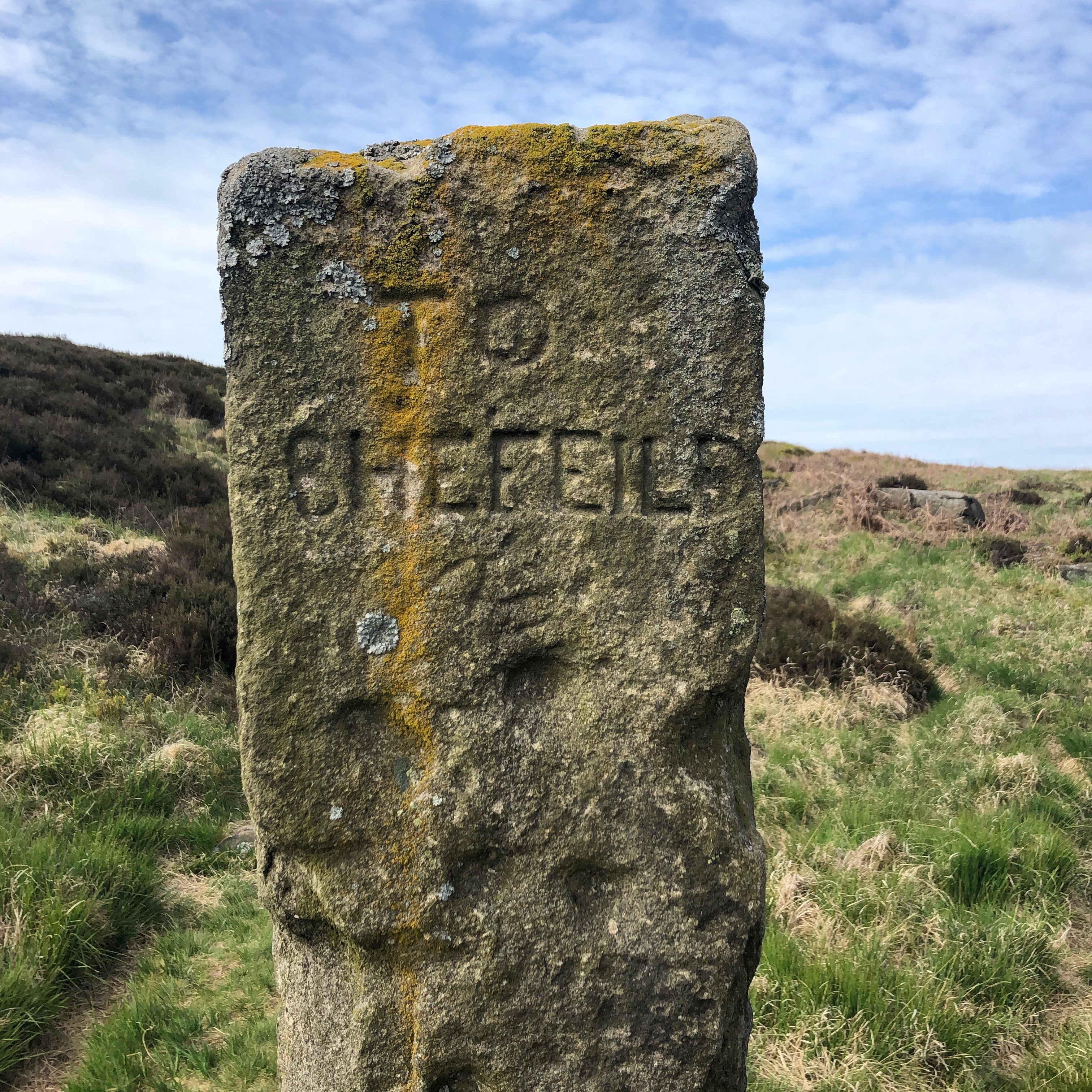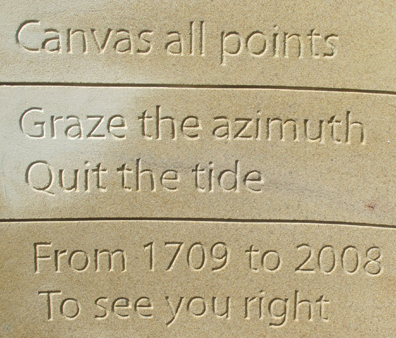 A guide stoop is a type of stone signpost characteristic of the Peak District. They were a response to the requirement of an Act of Parliament in 1697 requiring guideposts to be erected to show the way to the nearest market town. They are usually on moorland where there are no other landmarks to show the way, and they look like tall gateposts in the middle of nowhere. They are carved with the name of a town and sometimes a pointing hand; if there isn’t a hand, the traveller is supposed to stand facing the name of the desired destination on the stone and then turn right.
A guide stoop is a type of stone signpost characteristic of the Peak District. They were a response to the requirement of an Act of Parliament in 1697 requiring guideposts to be erected to show the way to the nearest market town. They are usually on moorland where there are no other landmarks to show the way, and they look like tall gateposts in the middle of nowhere. They are carved with the name of a town and sometimes a pointing hand; if there isn’t a hand, the traveller is supposed to stand facing the name of the desired destination on the stone and then turn right.
 The Companion Stones are a project of Arts in the Peak created in 2010, ‘a contemporary response to the Guide Stoops of the Derbyshire moorlands and a speculative map for the future’. There are twelve stones, designed and made by local poets, artists, sculptors and masons, each one placed beside one of the original guide stoops. ‘Like the Guide Stoops, each bears an inscription point, not to market towns, but towards the future. In so doing they draw attention to the moors, an indicator of the tricky environmental terrain we have yet to navigate.’
The Companion Stones are a project of Arts in the Peak created in 2010, ‘a contemporary response to the Guide Stoops of the Derbyshire moorlands and a speculative map for the future’. There are twelve stones, designed and made by local poets, artists, sculptors and masons, each one placed beside one of the original guide stoops. ‘Like the Guide Stoops, each bears an inscription point, not to market towns, but towards the future. In so doing they draw attention to the moors, an indicator of the tricky environmental terrain we have yet to navigate.’
That’s what the (excellent) website says. But as the walker encounters them they also speak to the individual and the journey. They offer wisdom about orientation, looking about, slowing down. They are beginning to weather, although they still look new beside the guide stoops, and they say something about the time and space they sit in.























